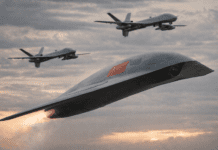This post is also available in:
 עברית (Hebrew)
עברית (Hebrew)
The European Commission (EC) signed an agreement to launch the Land Tactical Collaborative Combat (LATACC), bringing together around 34 companies and research institutions to achieve collaboration and interconnectivity between disparate European Armed Forces’ assets for better, more responsive actions on the battlefield.
This project will be led by the Thales Group, which explains that it aims to facilitate collaboration between the various land combat systems developed by different member states, including the Scorpion program in France, CAMO in Belgium, DLBO in Germany, BMS-ET in Spain, FNEC in Italy, LSS Mark in Sweden, and MIME in Norway.
According to Interesting Engineering, the project also aims to ensure these systems can work effectively within a coalition with short response times. The systems are also designed to interface with domains such as air, space, and cyber, as well as civil systems like 5G.
The project will be led by experts with extensive experience in complex land systems and leverage the strong innovative capabilities of partners in key areas like cloud technologies, communications, sensors, integration of complex systems, robotics, effectors, AI, and system resilience in constrained environments.
The next three years are expected to be spent analyzing the needs of European users, conducting various studies to identify common operational scenarios, defining interoperable open architectures compatible with current and future standards, and developing essential technological components to create advanced technology demonstrators.
This initiative also aims to establish a European framework and tactical-level collaboration services to accelerate innovation and improve the interoperability between national programs and cooperations. Thales explains the goal is to safeguard the sovereignty of the European industry in the field of collaborative combat and ensure that the necessary key technologies are available to make such a concept a reality.
LATACC is an excellent example of how a large number of industry players, institutional partners and government agencies can come together to address a complex issue with groundbreaking implications.
This information was provided by Interesting Engineering.


























